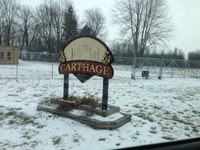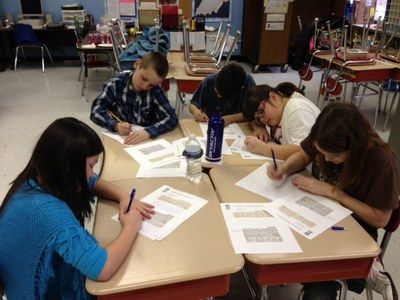
Purchase Tickets
How Small Is Too Small?
February 6, 2013

Last week I traveled to Carthage Elementary School in Rush County to present a Civil War program to fourth grade history club students. I have visited this school every year for the past eight years and always find myself looking forward to stopping in the less-than-1,000-people town. The people are friendly and the students are excited and attentive. This year, the club has five members, a slight decline from previous years.
Presenting to a small student audience allows me to answer every question asked, go over something again if one student does not understand and personalize my presentation style. During the activity portion of my program, students are divided into teams and read through excerpts of Hoosier soldiers’ Civil War letters. They encounter challenging handwriting and grammar but usually pick up the process after a few hints. The Carthage kids worked together as a group of five and helped each other along the way. It was great to see them get so involved in looking at something from the past.
 I left Carthage with a bit of sadness because times are changing. How we do outreach has to be redesigned to increase sustainability. In this tough economic climate, it is harder to justify the time and money it takes to serve small groups. But how do we define “small”? And how does the number of students affect the quality of the program? Does outreach need to involve a staff person driving to each school to present or should we focus on digital options? As we approach Indiana’s Bicentennial, we hope to find a balance that will keep kids engaged and not break the bank.
I left Carthage with a bit of sadness because times are changing. How we do outreach has to be redesigned to increase sustainability. In this tough economic climate, it is harder to justify the time and money it takes to serve small groups. But how do we define “small”? And how does the number of students affect the quality of the program? Does outreach need to involve a staff person driving to each school to present or should we focus on digital options? As we approach Indiana’s Bicentennial, we hope to find a balance that will keep kids engaged and not break the bank.
____________________








